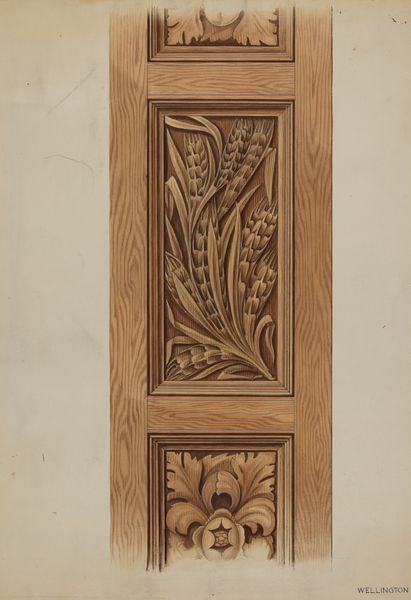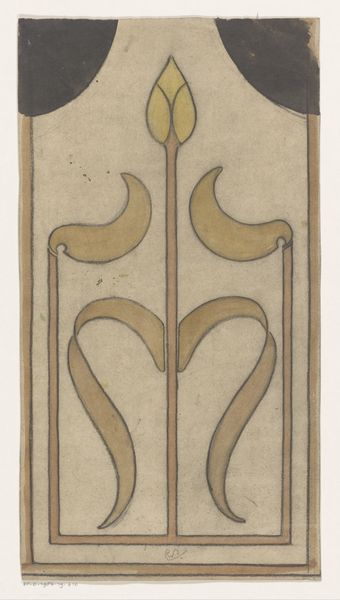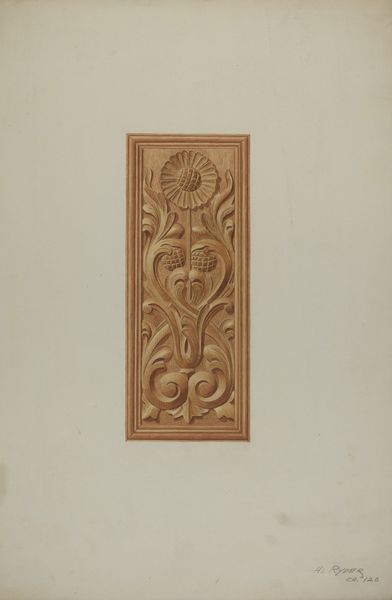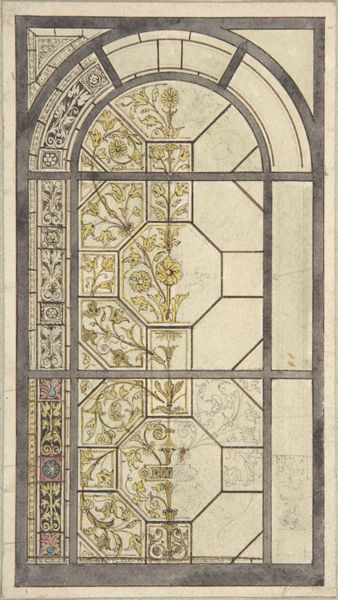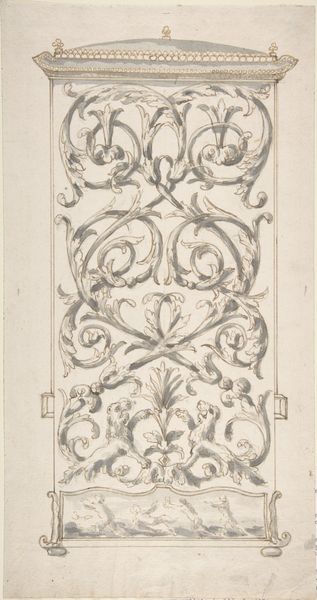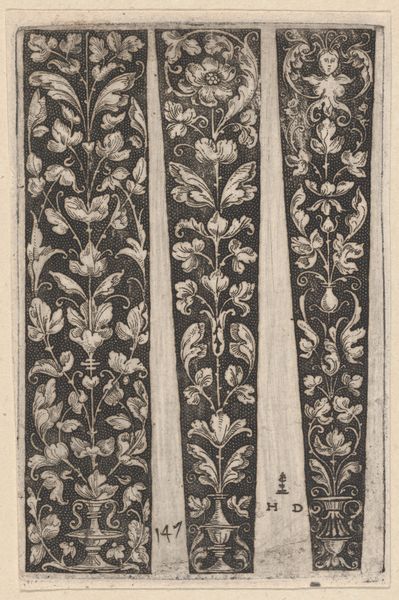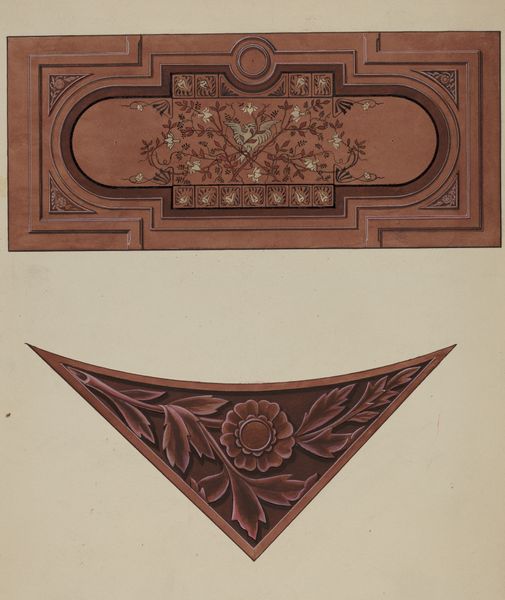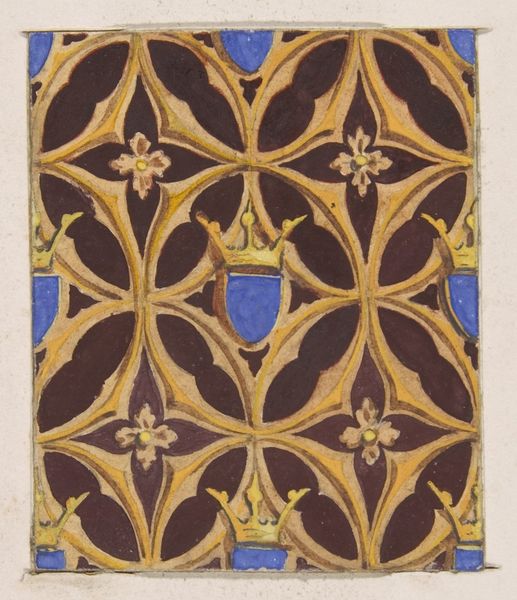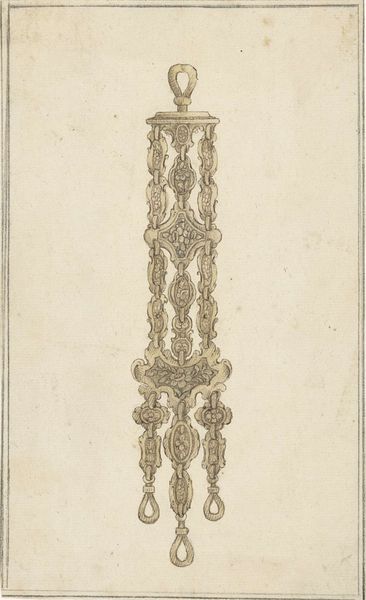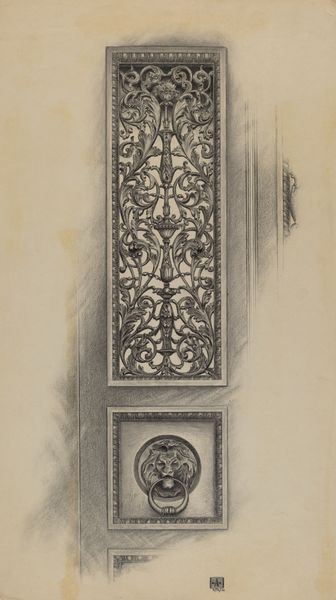
drawing, paper, watercolor
#
drawing
#
organic
#
paper
#
watercolor
#
watercolour illustration
#
decorative-art
#
watercolor
Dimensions: overall: 34.9 x 25 cm (13 3/4 x 9 13/16 in.) Original IAD Object: 3" high; 10" wide
Copyright: National Gallery of Art: CC0 1.0
Curator: Welcome. We are looking at “Painted Glass - Mariner's Church” from around 1937 by James McLellan, rendered in watercolor and drawing on paper. It presents an image of an ornate organic stem in warm golds. Editor: My first impression is a kind of understated opulence. The muted gold against the brown is quite striking. It almost has the feeling of a medieval illuminated manuscript, something precious. Curator: I am drawn to the process itself. Watercolor, known for its translucence, is here layered to mimic the heavier density of stained glass. This piece likely served as a design proposal or a record for a completed stained-glass panel. One can imagine the craftsman painstakingly translating these washes into the substantial medium of glass and lead. What this watercolor achieves, however, that painted glass would struggle to express, is the matte tone overall which flattens the perspective. It's as if all depth and shadow is erased or made even, which would likely allow light to hit each place of the composition in even measure. Editor: I agree. There's a definite sense of a preliminary sketch here, capturing an idea. The organic elements, leaves and stems, perhaps represent growth, life, and connection, appropriate imagery for a church. The stylized leaves have a formalized shape. Note that the acorns are yet immature. The artist employs symbolism tied to maritime settings, alluding to themes of safe journeys and blessings. Curator: And we should consider the specific cultural moment: the 1930s, a time of economic depression and the lead-up to war. Churches, particularly Mariner's Churches, served vital social functions. The artist then, may be pointing us to a wider discourse on class, society and power through something as "simple" as an artistic choice in medium. The watercolor on paper enabled, in effect, a mass production and wide distribution that painted glass would prevent. Editor: Precisely. These recurring motifs – leaves, the promise of new life, nautical protection—acted as visual touchstones, reinforcing shared values. Curator: Examining the piece as a material artifact of its time gives a powerful insight into a complex context. Editor: And allows us to view its artistry from this angle! The use of iconography offers us a portal into understanding historical ideas.
Comments
No comments
Be the first to comment and join the conversation on the ultimate creative platform.

